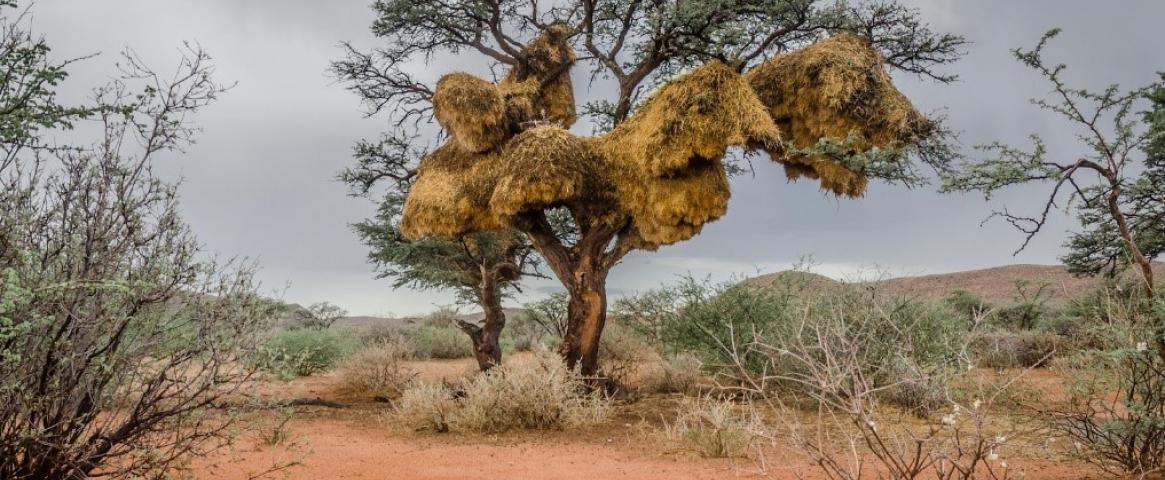By Kiran Gurung
At first glance, a cheetah seems to rest under a giant haystack hanging from a tree. But up close, this ‘haystack’ turns out to be a giant, communal nest, built by 6-inch-sized birds known as sociable weavers that live in colonies of up to 500 individuals. In addition to cheetahs, antelopes, mountain zebras and dozens of other species use the nests, according to a new study published in the Journal of Animal Ecology.
Scientists have known for decades that other animals used weavers’ nests, and suspected the birds might act as “ecosystem engineers”—species that radically transform their environment to influence the lives of other species in the region. Animals ranging from ants to elephants can act in similar ways. Although birds are pollinators and otherwise benefit ecosystems, precisely how communal nests might impact the environment was unclear.
“This study is the first one to make a detailed assessment of the animals dependent on these nests,” says ecologist Rita Covas of CIBIO-Research Centre in Biodiversity and Genetic Resources, Portugal, who was not involved with this study.
To understand the significance of sociable weavers’ nests, Anthony Lowney of the University of Cape Town in South Africa and his colleagues set out on a year-long study across a stretch of 13,000 hectares in the Tswalu Kalahari Reserve, a privately-owned game reserve. The researchers set up camera traps at 90 trees, half of which had sociable weavers’ nests, to track visiting animals and their behaviors.
They found 35 species of terrestrial animals, 12 tree-dwelling species, and 40 different types of birds visited trees with the nests, using them to rest and feed or even mark some as their territories. “These colonies are hubs for local biodiversity”, says biologist Gavin Leighton of Buffalo State College in New York who was not involved with the study. “Not many birds have such a direct impact on other animals as sociable weavers.” In addition to sheltering from heat under the nests, cheetahs and mongooses were seen on the colonies. From past studies, birds such as raptors and parrots also used the weavers’ colonies as a foundation to build their own nests. “The amalgamation of straw and twigs provides a ready-made flat space”, Covas says.
Animals frequented trees with weavers’ colonies more often than those without the nests. Tree-dwelling species such as dormice and black-tailed tree rats, for instance, visited trees with colonies 36 times as often as those without the weavers’ nests. Terrestrial animals used trees with nests twice as frequently as those without the nests. One reason the nests are used so widely is that they act as buffers against temperature extremes, says Lowney. “For a small bird, sociable weavers provide a lot of resources for a lot of different species,” Lowney adds. “As the environment becomes hotter and drier, these could be extremely important resources within our landscape.”
Kiran Gurung is a graduate student in the University of Groningen, The Netherlands.
This story was produced as part of NASW's David Perlman Summer Mentoring Program, which was launched in 2020 by our Education Committee. Gurung was mentored by Jyoti Madhusoodanan.
Main image: Sociable weavers’ colony in the Kalahari desert Credit: Anthony M Lowney.






